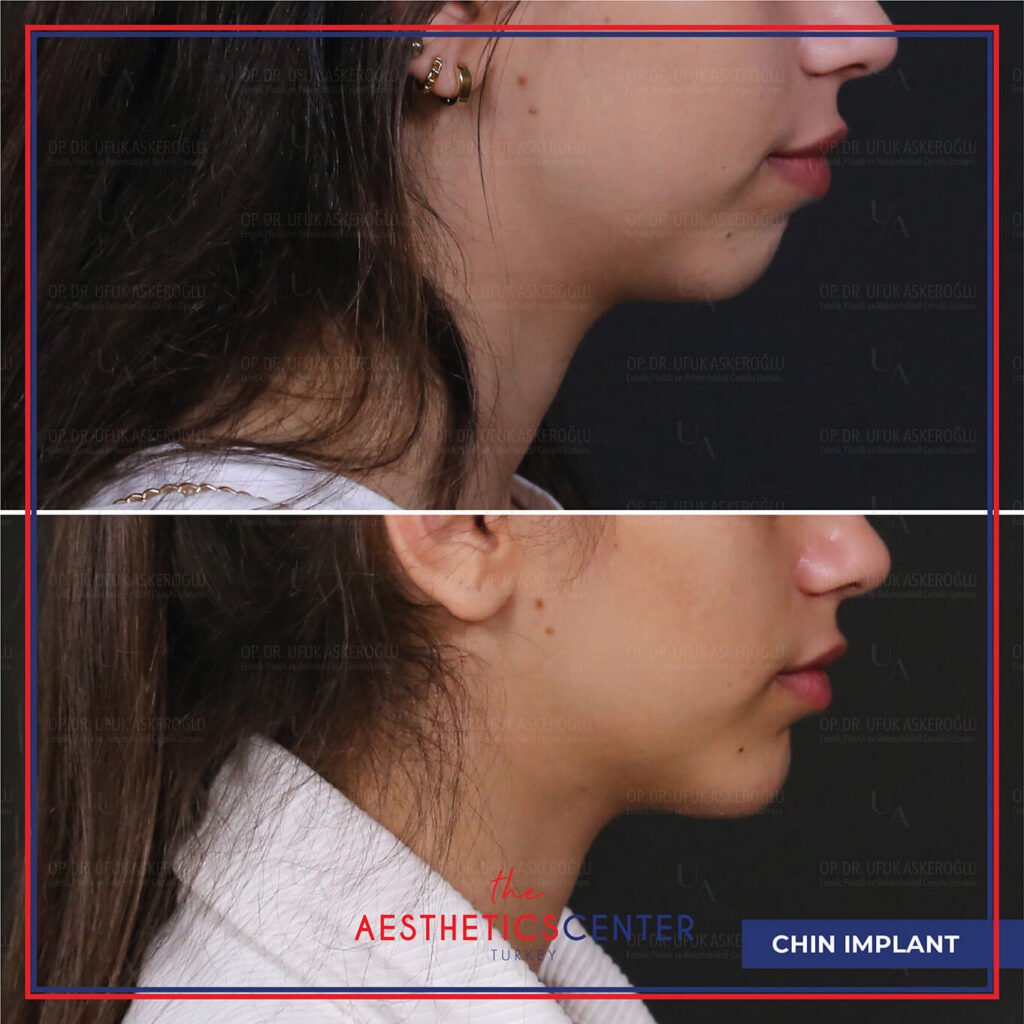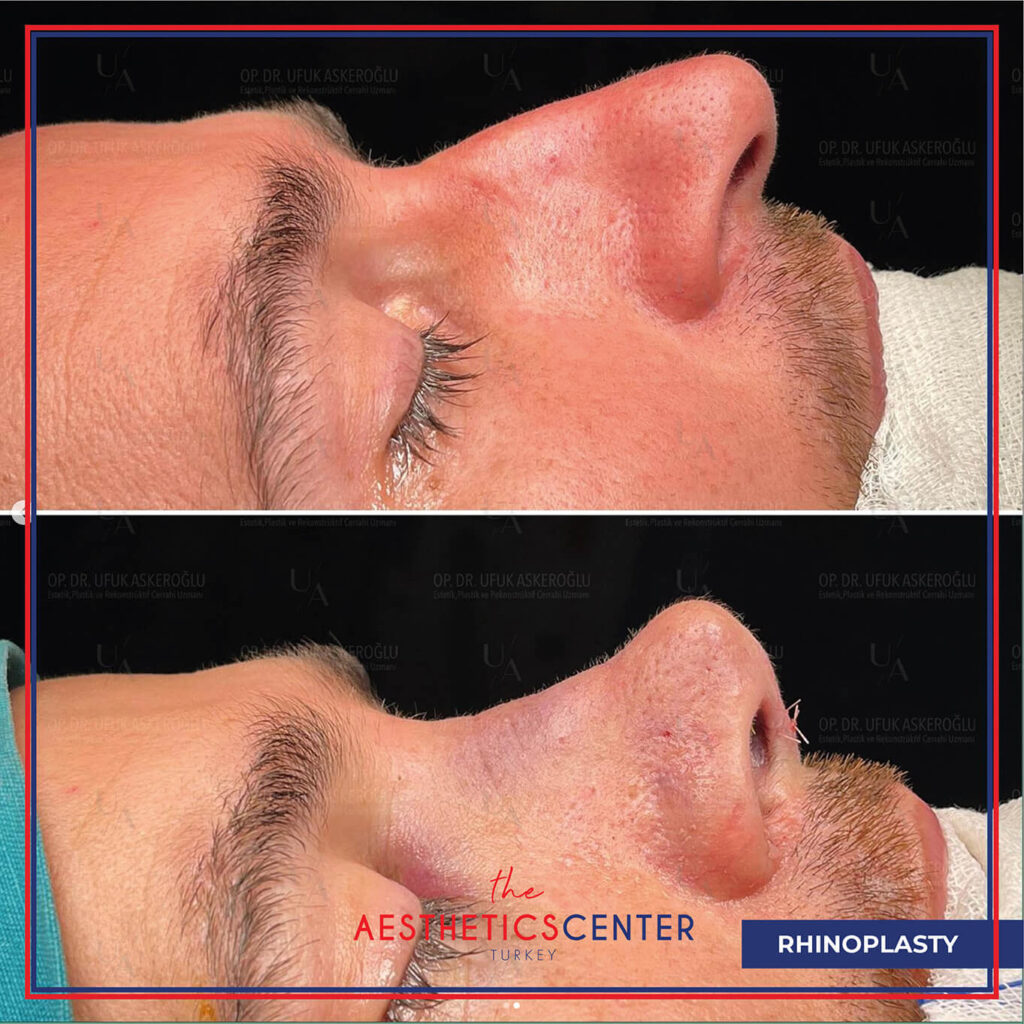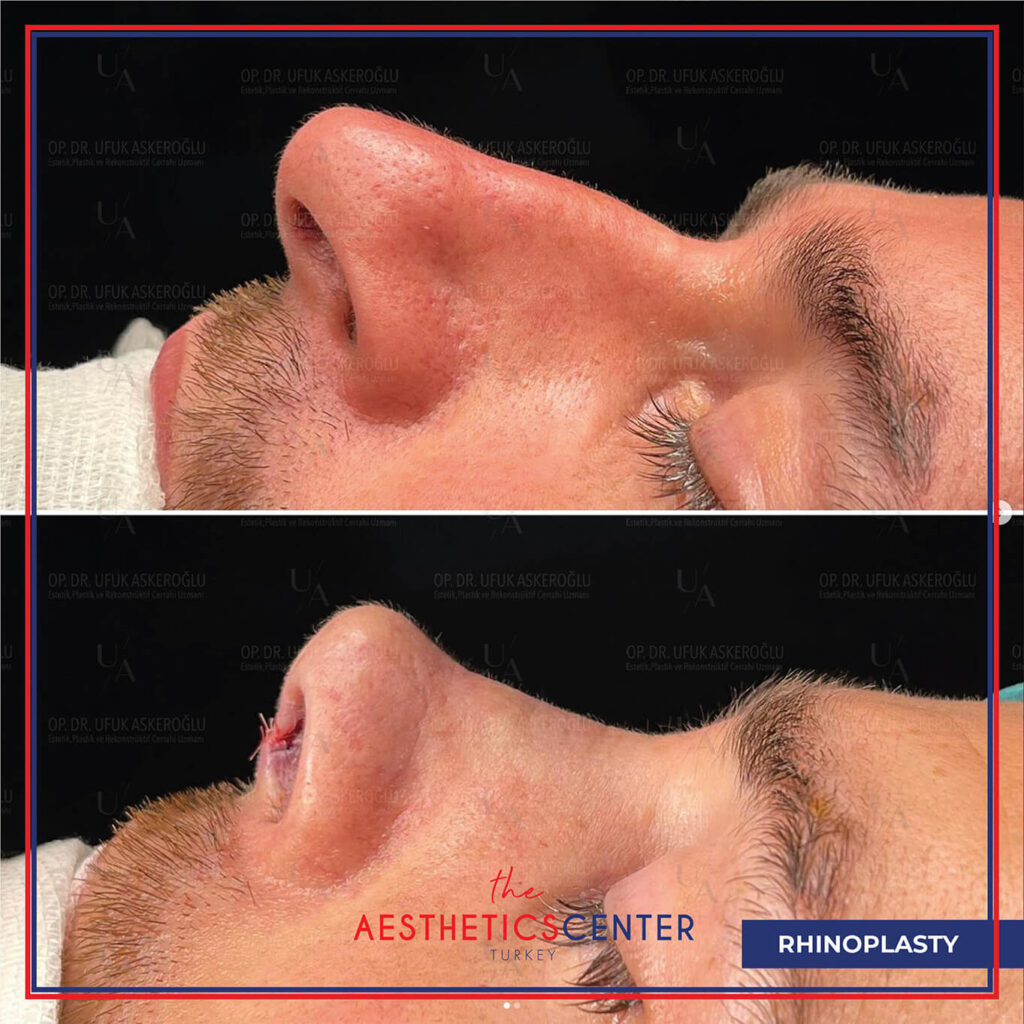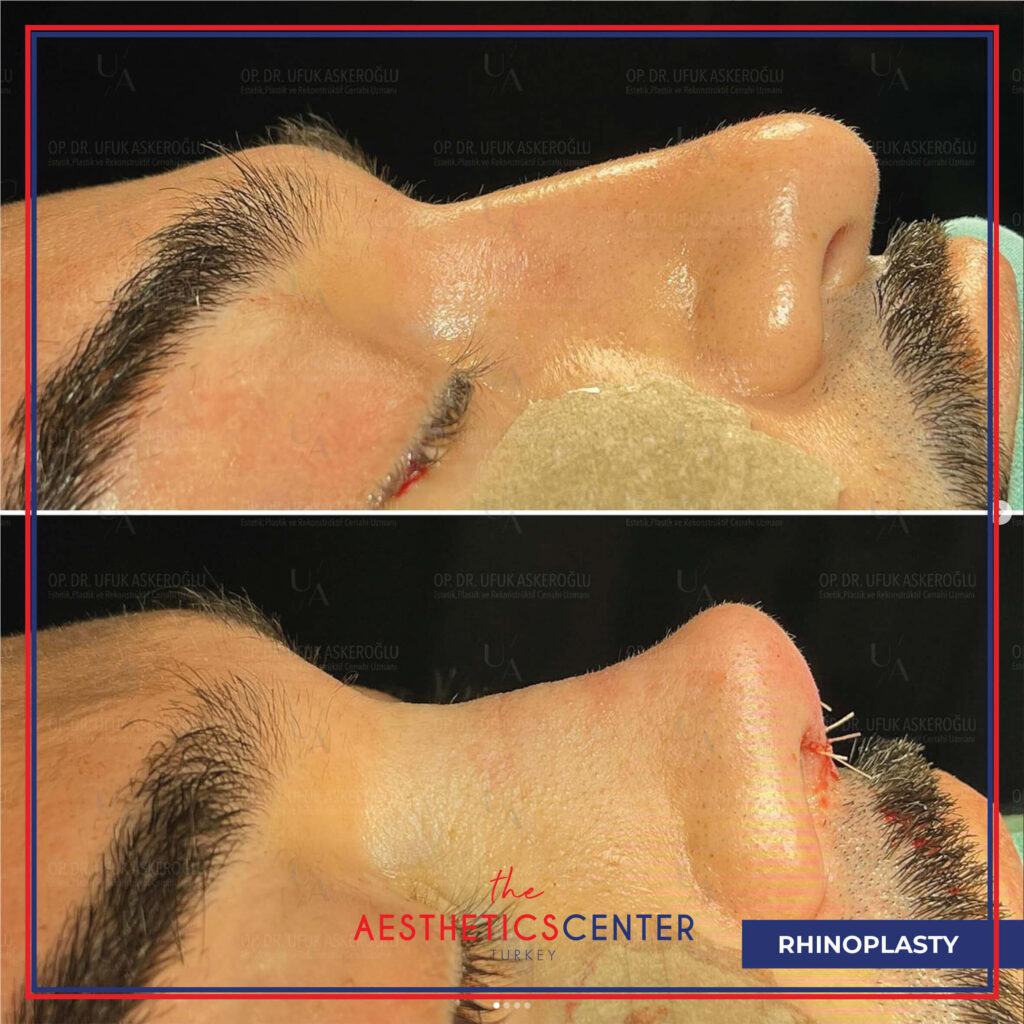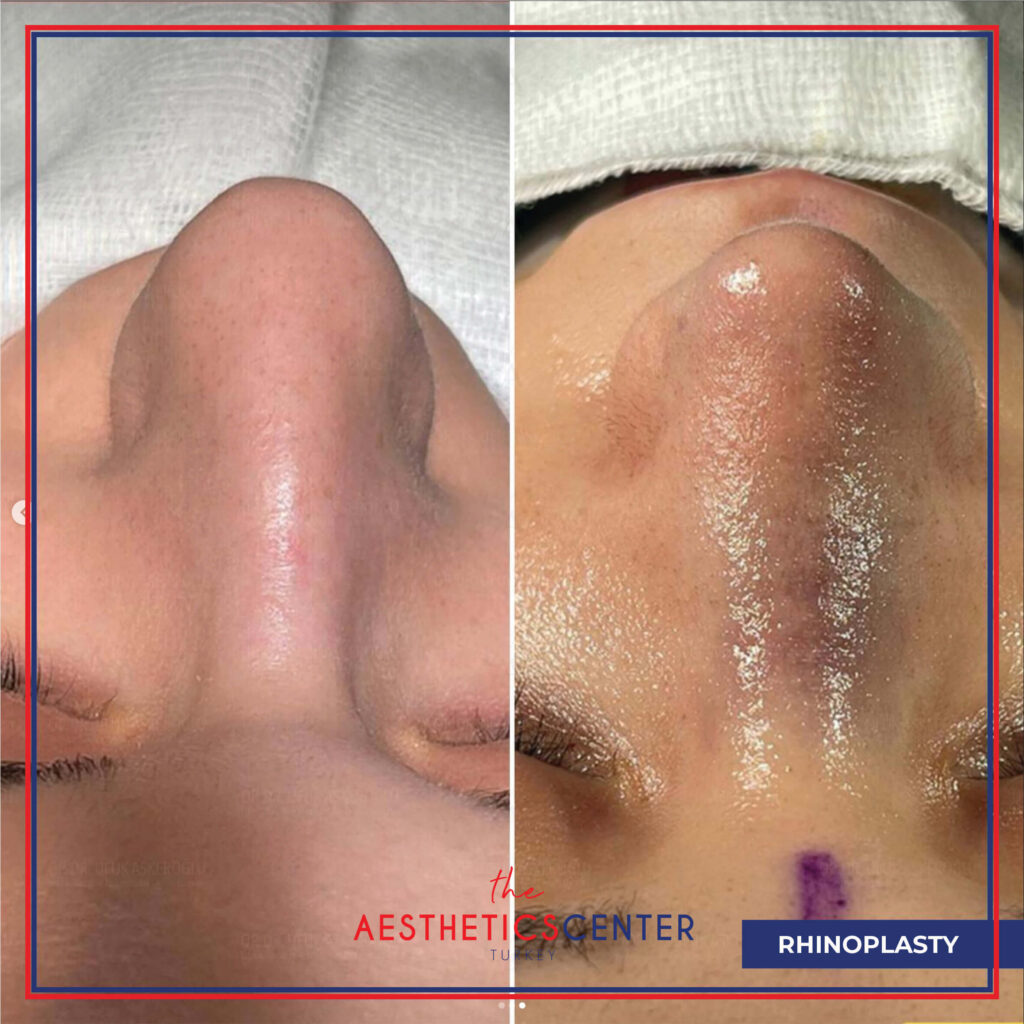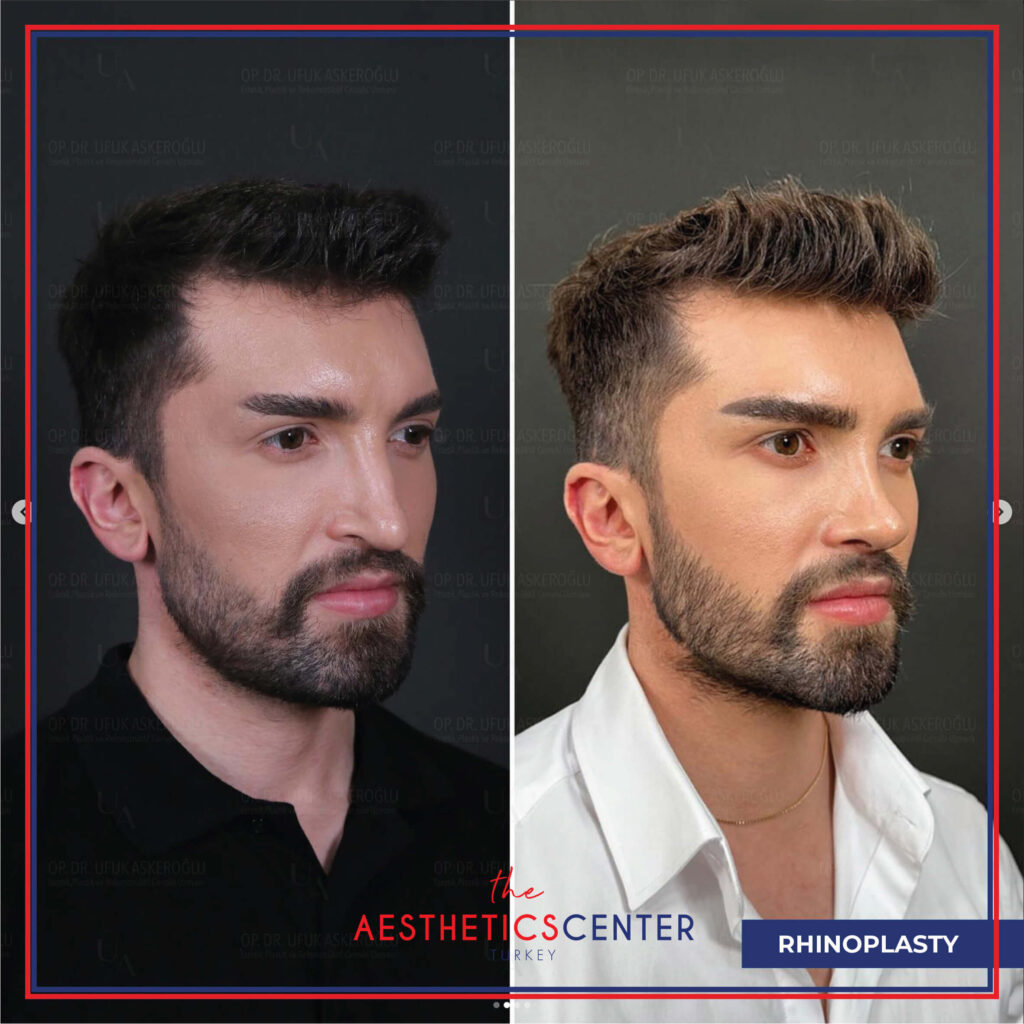
Rhinoplasty (Nose Job) in Turkey
What is rhinoplasty?
Get the nose that fits your facial features with Piezo Rhinoplasty
Rhinoplasty Turkey, commonly known as a “nose job,” is a surgical procedure that alters the shape and size of the nose to enhance its appearance and/or improve its function. Rhinoplasty surgery can be performed for cosmetic reasons, such as changing the shape of the nose to improve the overall facial symmetry, or for functional reasons, such as correcting breathing difficulties.
Different Types of Rhinoplasty Surgery
Open Rhinoplasty
Open Rhinoplasty Turkey is a type of nose surgery that involves making a small incision in the skin that separates the nostrils, called the columella, as well as additional incisions inside the nostrils. This approach provides the surgeon with better visibility and access to the nasal structures, allowing for more precise modifications to be made. Open rhinoplasty is typically used in cases where more extensive reshaping of the nose is required, or if the patient has previously undergone rhinoplasty and requires additional corrections.
How Does Open Rhinoplasty Work?
During an open Rhinoplasty Turkey, the surgeon makes a small incision in the columella, which is the small strip of skin that separates the nostrils. This incision allows the surgeon to lift the skin and gain access to the underlying nasal structures, including the cartilage and bone. The surgeon can then make the necessary modifications to reshape the nose, such as reducing a hump, altering the shape of the tip, or narrowing the nostrils.
In addition to the incision in the columella, the surgeon will also make incisions inside the nostrils. These incisions allow the surgeon to lift the skin from the underlying nasal structures, which can be modified as needed. Once the necessary modifications have been made, the skin is re-draped over the new structure, and the incisions are closed with sutures.
How Long Does Open Rhinoplasty Take?
Open Rhinoplasty Turkey surgery typically takes between 2-3 hours to complete, and patients are placed under general anaesthesia during the procedure. After the surgery, patients will need to wear a nasal splint for 1-2 weeks to help support the nose as it heals. Swelling and bruising are common after the surgery, and most patients will need to take about one week off from work or other activities to recover.
Closed Rhinoplasty
Closed rhinoplasty surgery is a type of nose surgery that involves making all of the incisions on the inside of the nose, without any external incisions. This approach is typically used when the patient requires only minor modifications to their nasal structure or when the surgeon has a clear view of the nasal structures and can perform the necessary modifications without the need for external incisions.
How Does Closed Rhinoplasty Work?
During a closed Rhinoplasty Turkey, the surgeon will make incisions inside the nostrils, allowing them to lift the skin and access the underlying nasal structures. The surgeon can then make the necessary modifications to reshape the nose, such as reducing a hump, altering the shape of the tip, or narrowing the nostrils.
What is a Benefit of Closed Rhinoplasty?
One of the benefits of closed Rhinoplasty Turkey is that there are no external incisions, which means that there will be no visible scarring on the outside of the nose. In addition, closed rhinoplasty typically involves less postoperative swelling and bruising than open rhinoplasty, since there are no external incisions that need to heal.
How Long Does Closed Rhinoplasty Take?
Closed Rhinoplasty Turkey typically takes between 1-2 hours to complete, and patients are placed under general anaesthesia during the procedure. After the surgery, patients will need to wear a nasal splint for 1-2 weeks to help support the nose as it heals. Swelling and bruising are common after the surgery, but most patients will be able to return to work or other activities within a week.
Reduction Rhinoplasty
What is a Reduction Rhinoplasty (Nose Job)?
Reduction Rhinoplasty Turkey is a type of nose surgery that is used to reduce the size of the nose. This can involve reducing the size of the nose overall, or focusing on specific areas of the nose, such as the bridge, tip, or nostrils. Reduction rhinoplasty can be performed using either open or closed techniques, depending on the specific needs of the patient.
How a Reduction Rhinoplasty Work?
During a reduction Rhinoplasty Turkey, the surgeon will make incisions either inside the nostrils (closed rhinoplasty) or in the columella (open rhinoplasty), allowing them to access the nasal structures that need to be modified. The surgeon may then reshape the bone, cartilage, and other tissues of the nose, to reduce the size and improve the overall appearance of the nose. This may involve removing excess bone or cartilage, reshaping the tip, or narrowing the nostrils.
How Long Does Reduction Rhinoplasty Take?
Reduction Rhinoplasty Turkey is typically performed under general anaesthesia, and the surgery can take several hours to complete, depending on the extent of the modifications needed. After the surgery, patients will need to wear a nasal splint or cast for up to two weeks to help support the nose as it heals. Swelling and bruising are common after the surgery, and most patients will need to take about one week off from work or other activities to recover.
Augmentation Rhinoplasty
What is a Augmentation Rhinoplasty (Nose Job)?
Augmentation rhinoplasty surgery is a type of nose surgery that is used to increase the size or projection of the nose. This can involve using a variety of techniques to add volume or length to the nose, such as using implants, cartilage grafts, or tissue from another part of the body.
How a Augmentation Rhinoplasty Work?
During an augmentation rhinoplasty, the surgeon will make incisions either inside the nostrils (closed rhinoplasty) or in the columella (open rhinoplasty), allowing them to access the nasal structures that need to be modified. The surgeon may then add a nasal implant, such as silicone, Gore-Tex, or Medpor, to increase the size or projection of the nose. Alternatively, the surgeon may use cartilage or tissue from another part of the patient’s body, such as the ear or rib, to augment the nose.
How Long Does Augmentation Rhinoplasty Take?
Augmentation rhinoplasty is typically performed under general anaesthesia, and the surgery can take several hours to complete, depending on the extent of the modifications needed. After the surgery, patients will need to wear a nasal splint or cast for up to two weeks to help support the nose as it heals. Swelling and bruising are common after the surgery, and most patients will need to take about one week off from work or other activities to recover.
Ethnic Rhinoplasty
What is a Ethnic Rhinoplasty (Nose Job)?
Ethnic rhinoplasty is a type of nose surgery that is performed on patients who wish to enhance or change the appearance of their nose while still maintaining their ethnic identity. This type of rhinoplasty is specifically tailored to the patient’s unique facial features and cultural heritage.
The Artistry of Ethnic Rhinoplasty
Patients of different ethnic backgrounds often have distinct nasal characteristics that require specialized techniques to achieve optimal results. For example, African American patients may have thicker skin and weaker cartilage structures, while Asian patients may have flatter nasal bridges and wider nostrils. Ethnic rhinoplasty takes into account these unique features and uses specialized surgical techniques to preserve or enhance them, while still achieving the patient’s desired aesthetic outcome.
How a Ethnic Rhinoplasty Work?
During an ethnic rhinoplasty, the surgeon will make incisions either inside the nostrils (closed rhinoplasty) or in the columella (open rhinoplasty), allowing them to access the nasal structures that need to be modified. The surgeon may then use a variety of techniques to reshape the nose, including adding or removing cartilage or bone, adjusting the nasal bridge, refining the tip, or reducing the size of the nostrils.
Revision Rhinoplasty
What is a Revision Rhinoplasty (Revision Nose Job)?
Revision rhinoplasty is a type of nose surgery that is performed on patients who have previously undergone one or more rhinoplasty procedures but are dissatisfied with the results. This type of rhinoplasty is also known as secondary rhinoplasty and can be a more complex procedure than primary rhinoplasty, as the nasal structures may have already been altered.
How a Reduction Rhinoplasty Work?
During a revision rhinoplasty, the surgeon will evaluate the patient’s previous nasal surgery and assess the extent of the changes that need to be made. The surgery may involve rebuilding the nasal structures using cartilage or bone grafts, removing, or replacing existing implants, or reshaping the nasal tip or bridge. In some cases, the surgeon may need to repair internal nasal structures such as the septum or turbinates.
Expert and Experienced Surgeons Required For Revision Surgeries!
Because revision rhinoplasty can be a more complex procedure than primary rhinoplasty, it requires a high level of surgical skill and experience to achieve optimal results. It is important for patients to choose a surgeon who has extensive experience with this type of procedure, as well as a detailed understanding of the patient’s specific nasal anatomy and previous surgical history.
Have Realistic Expectations After Revision Surgeries!
Additionally, it is important for patients to have realistic expectations about the outcome of the surgery. Patients should also be prepared for a longer recovery period and more extensive postoperative care than with primary rhinoplasty. It is important to discuss the potential risks and benefits of revision rhinoplasty with one of our qualified plastic surgeons.
Rhınoplasty FAQ
What is the recovery time for rhinoplasty surgery?
The recovery time for rhinoplasty surgery varies from person to person, but most patients can expect to take at least one week off from work to recover. Swelling and bruising may last for several weeks or longer.
Will I have visible scars after rhinoplasty surgery?
In a closed rhinoplasty, all incisions are made inside the nostrils, so there will be no visible scarring. In an open rhinoplasty, there may be a small scar on the columella, but it will typically be hidden from view.
Will rhinoplasty surgery affect my ability to breathe?
Rhinoplasty surgery can improve breathing by correcting structural abnormalities that may be obstructing the airway. In some cases, functional rhinoplasty may be recommended specifically to address breathing difficulties.
How long will the results of rhinoplasty surgery last?
The results of rhinoplasty surgery are long-lasting, but they may be affected by factors such as aging, weight fluctuations, and injury.
How long should I stay in Istanbul after rhinoplasty surgery?
You need to stay in Istanbul for 7-8 days after your operation.






